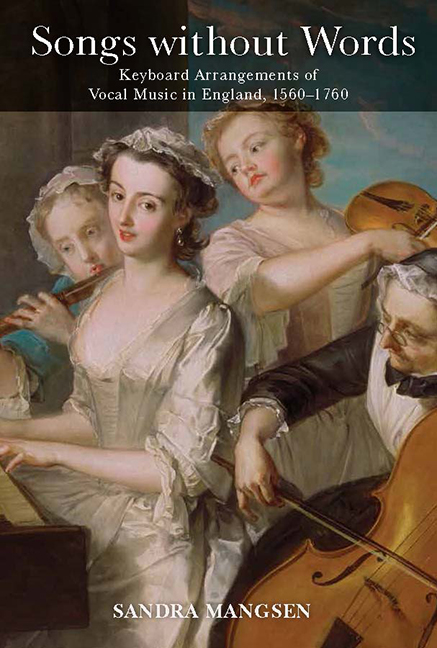Book contents
- Frontmatter
- Dedication
- Contents
- List of Illustrations
- Preface
- Acknowledgments
- Abbreviations
- Introduction
- 1 Ballads Transformed
- 2 Arias Domesticated: The Ladys Entertainment and Other Early Eighteenth-Century Anthologies
- 3 With Their Symphonies: William Babell and The Ladys Entertainment Books 3 and 4
- 4 Opera Remix: Babell's Suits of 1717
- 5 After Babell: Arrangements for Ladies and Gentlemen
- 6 Afterthoughts
- Appendix The Ladys Banquet (Second Series): Contents, Concordances, and Dissemination
- Notes
- Bibliography
- Index
- Frontmatter
- Dedication
- Contents
- List of Illustrations
- Preface
- Acknowledgments
- Abbreviations
- Introduction
- 1 Ballads Transformed
- 2 Arias Domesticated: The Ladys Entertainment and Other Early Eighteenth-Century Anthologies
- 3 With Their Symphonies: William Babell and The Ladys Entertainment Books 3 and 4
- 4 Opera Remix: Babell's Suits of 1717
- 5 After Babell: Arrangements for Ladies and Gentlemen
- 6 Afterthoughts
- Appendix The Ladys Banquet (Second Series): Contents, Concordances, and Dissemination
- Notes
- Bibliography
- Index
Summary
To Mrs. Turner's, where we were all at a collacion to-night till twelve o'clock, there being a gentlewoman there that did play well and sang well to the Harpsicon, and very merry we were.
The Diary of Samuel PepysThis is Pepys, describing an evening's domestic entertainment he and his wife enjoyed in April 1661. To judge by the balance of arrangements and original keyboard music in mid-seventeenth century sources, it is likely that at least some of what was heard by the company was derived from popular songs and dance tunes, already familiar from other contexts (tavern, street, or theatre), but also suitable for singing or playing at home. In this chapter I will explore the corpus of keyboard arrangements in English sources from before the Restoration (1660), focusing on those derived from traditional and Broadside ballads and others based on lute songs, madrigals, and chansons. Our access to this large repertoire is primarily by way of extant manuscripts, but it is well to keep in mind that the practice of playing a keyboard version of a song or dance must have arisen within an improvisatory context. In Pepys’ day, some players likely knew the tunes well enough and had sufficient skill to create keyboard arrangements on the spot, with no need of a notated score. At least in this era, notation generally follows practice: one writes down an arrangement to remember it, perhaps to teach it, or to make it more complex and thus difficult to recall without notation. The written sources show us only traces of a broader improvisatory practice, but they remain our best entrée. Pepys lets us see the various contexts in which the arrangements were played, but doesn't give us much information about how they sounded, although he does note that some play only “ordinary tunes” while others offer “good musique.” A large English manuscript copied before mid century (Pc Rés. 1186) provides a useful point of reference, as its content is more or less equally divided among three types of music for keyboard found in the sources: in Martha Maas’ description, “vocal transcriptions, most of them quite faithful to their originals; solo keyboard pieces similar to those in other ‘virginal’ manuscripts; and small, simple harmonizations of popular songs and dance tunes.”
- Type
- Chapter
- Information
- Songs without WordsKeyboard Arrangements of Vocal Music in England, 1560–1760, pp. 12 - 58Publisher: Boydell & BrewerPrint publication year: 2016



